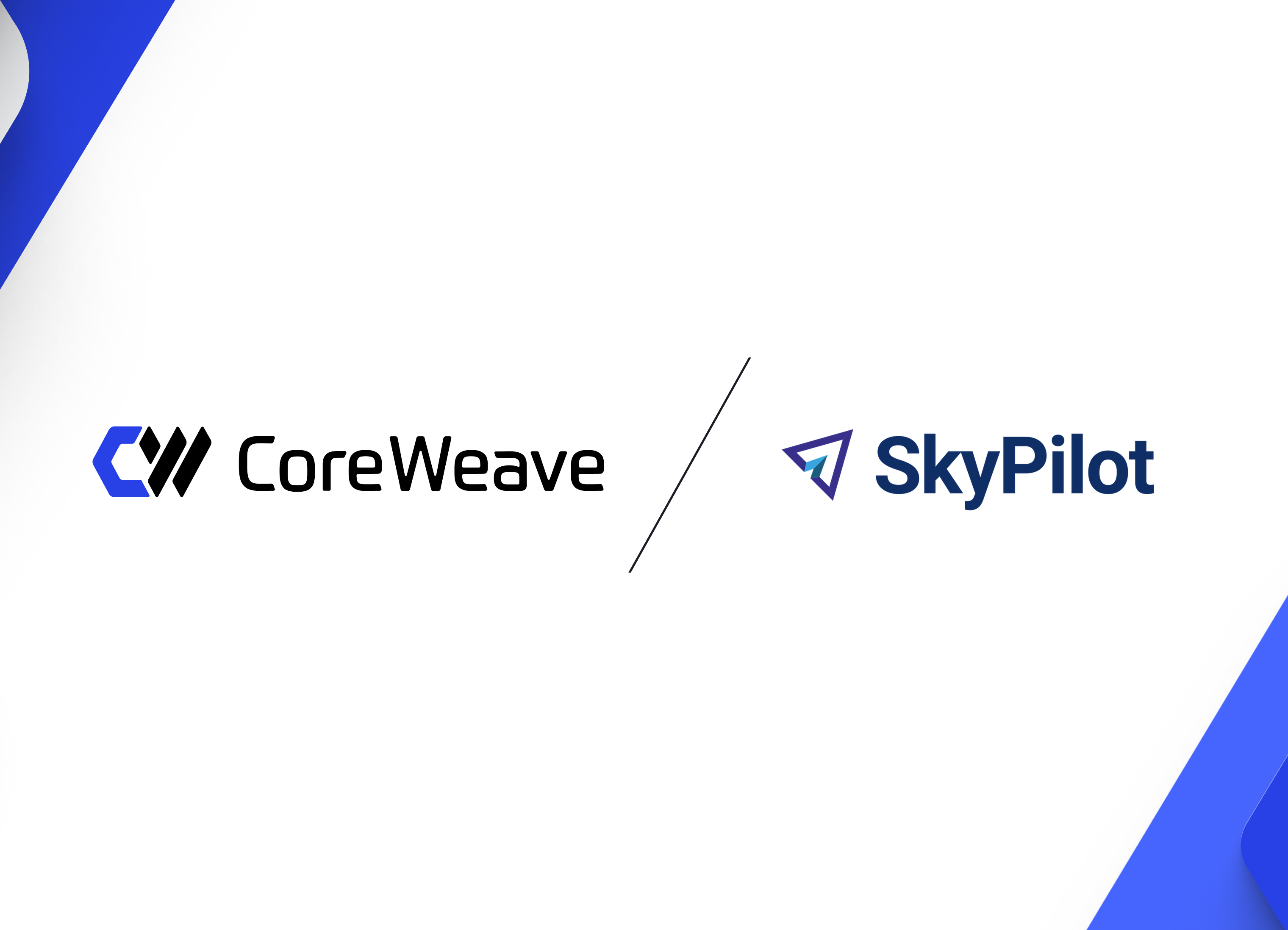Your ML data isn’t just priceless. It’s also pricey.
Each fine-tune spits out gigabytes of “just-in-case” artifacts, compiling with checkpoints, model weights, and datasets. Teams default to hot storage for these artifacts to avoid rehydration delays, but the costs pile up fast. That data sprawl also clogs your storage containers, slows down directory listings, and risks capacity alarms in the middle of a breakthrough.
Before you hit delete or archive your data, consider this: What if your object storage was built for AI and smart enough to automatically distinguish and lower the price for inactive data, without slowing reads or changing your pipeline?
In this post, we’ll explain how CoreWeave AI Object Storage’s automated, usage-based billing levels for AI checkpoints and other cold data can help curb storage costs and keep experiments moving. We’ll also walk through how CoreWeave AI Object Storage classifies inactivity and applies lower pricing in-place, delivering savings of up to—and in many cases exceeding—75%.
Want the deep dive now? Download our ebook Beyond the Hot Tier: Cut AI Storage Costs, Accelerate Breakthroughs.
When hot storage becomes a budget fire
In large-scale AI pipelines, data volumes grow faster than teams anticipate. Every hyperparameter sweep, branch fork, or nightly experiment adds dozens of AI artifacts to your bucket.
In real AI workloads, the split skews heavily toward inactive data. No public benchmarks quantify inactive data in AI storage at scale today, but some industry trends suggest around 80% of data is inactive at any given time.
Those kinds of numbers add up really quick in any environment. The chart below (based on real-world numbers) shows that inactive data typically ranges from 75% to 93% of the total footprint across three anonymized CoreWeave customer scenarios.
Table: representative customer data mix (anonymized).
The challenge: Keeping everything “hot” explodes costs, computational overhead, and operational drag. Left unchecked, this sprawl not only inflates your object storage costs but also degrades performance, complicates audits, and eats into headroom for new data.
The typical solutions, deleting or archiving, leave much to be desired.
Why deleting data isn’t the answer
It might seem intuitive to simply delete outdated AI checkpoints to rein in your storage costs. However, then you lose that data for future AI training. In practice, manual deletion creates even more complexity:
- Loss of audit trails: Compliance or rollback requirements often demand complete histories of model snapshots.
- Inconsistent retention: Manual cleanup logic can leave gaps or remove critical checkpoints by mistake.
- Increased on‑call load: Writing and maintaining deletion scripts adds operational debt and risk of downtime.
Rather than a one-off fix, deletion becomes an ongoing burden and offers zero guarantees that your pipeline remains reliable or auditable.
Where traditional cloud archiving falls short for AI workloads
Most cloud storage tiering features were designed for general-purpose object storage, not iterative ML. Teams end up wiring policies into code, absorbing extra line items on the bill, and accepting slower reads from archive tiers. These tradeoffs often push practitioners to keep more data hot.
While legacy clouds offer lifecycle-based “intelligent tiering” storage optimizations in an attempt to resolve this, these solutions tend to break under real AI workloads. Challenges with intelligent tiering include:
- The process is not fully automatic. It requires opt-in tagging and policies: developers must tag or classify data in code and maintain bucket policies to mark which checkpoints should be archived.
- You pay fees for the feature and for access. Hyperscalers often charge management fees to track access, plus request, retrieval, and egress fees when data moves between tiers.
- Performance takes a hit. Moving objects between tiers creates inconsistent read times; loading checkpoints from an archive or "inactive" tier can be slower, which nudges teams to keep more data in hot storage.
So what’s the best solution? It’s not deleting, not generic auto-archiving, and not even a separate storage tier. You need object storage for AI that does not charge you for inactive data and does not degrade performance. Basically, you’re looking for a unicorn. Luckily, CoreWeave has the right solution.
CoreWeave AI Object Storage’s automated usage-based billing: Save up to 75% on storage costs
CoreWeave AI Object Storage leverages automated usage-based billing to recognize inactive data based on real usage—no tags, no policies, no code changes. It simply bills that data at a lower rate, with the same high performance across every object.
How it works:
CoreWeave AI Object Storage uses real-time access tracking to adjust billing seamlessly across three transparent pricing levels—Hot ($0.06/GB/mo), Warm ($0.03/GB/mo), and Cold ($0.015/GB/mo)—based on how frequently data is accessed.
- Data automatically moves from Hot to Warm after seven days of inactivity, and from Warm to Cold after more than 30 days, all without any manual management or rehydration delay.
- Every object remains fully accessible at full line-rate performance, with no retrieval, egress, or request fees.
How is this possible? Unlike legacy hyperscalers, CoreWeave AI Object Storage was built for AI workloads from the ground up. Technically, CoreWeave AI Object Storage doesn’t archive data or move it at all; it simply does the work for you of figuring out which data is inactive, and we don’t charge you a premium for that data. The result is straightforward billing and predictable, low-latency access, whether a checkpoint was touched yesterday or last month.
No rehydration. No code changes. No wasted spend.
Cost comparison of CoreWeave AI Object Storage vs. traditional object storage
Hidden storage costs can add up. Even if you have a perfect system for hot and cold data tiering with another solution, you could still be overpaying.
Traditional hyperscaler approaches rely on archive tiers and intelligent tiering programs. These add policy setup, request and retrieval charges, and performance variance between tiers.
The following table compares the usage-based CoreWeave AI Object Storage approach against competitor archive solutions. The table is based on the following assumptions:
- 20 PB of data
- 1 MB average file size
- 20% of total data uploaded monthly
- 30% of total data read each month
- 30% data egress out of the cloud monthly
CoreWeave AI Object Storage billing optimization feature competitive comparison
Table: Competitive cost analysis for a 20 PB workload with typical access patterns.
CoreWeave AI Object Storage does not have any egress, per-request, retrieval, or tiering fees, and it maintains one consistent performance profile. That simplicity and transparency translates to lower total cost and fewer moving parts to manage. It also acts as a catalyst for innovation.
Beyond cost alone, you also gain:
- Consistent performance: Use smaller active namespaces and one performance profile for both active and inactive data.
- Operational peace of mind: Automated policies eliminate manual cleanup scripts and capacity alerts.
- Simplified governance: Keep full histories for audit while avoiding clutter in your hot path
No request, retrieval, or egress fees. Just object storage optimized and priced for the way you run your AI workloads.
Stop paying premium storage prices for inactive data
Most AI workloads produce far more data, artifacts, and checkpoints than they actively read. Checkpoints and intermediate artifacts pile up, and a large share sits inactive most of the time. Paying hot rates for everything strains budgets, slows operations, and crowds out headroom for new experiments.
While other clouds try to solve this problem with intelligent tiering, those systems were not built for iterative ML, resulting in more work (and more hidden storage costs) for you. CoreWeave AI Object Storage takes a different path. You get one simple storage experience that automatically classifies inactivity, applies lower pricing without separate tiers, and keeps performance consistent.
Store everything the way your AI workflows demand—without rehydration, added costs, or code changes. Simply pay less overall for predictable performance and cleaner operations for AI checkpoints at scale.
Looking for more storage solutions?
- Download the ebook, Beyond the Hot Tier: Cut AI Storage Costs, Accelerate Breakthroughs, to learn how the industry is shifting from rigid tiering to intelligent, usage-based storage practice.
- Learn six critical strategies to optimize high-performance computing storage for machine learning at scale.
- Review the benchmarks that demonstrate how CoreWeave AI Object Storage delivers 7+ GB/s per GPU throughput on ultra-performant clusters.
- Learn how the CoreWeave Cloud helps you simplify and accelerate storage for AI workloads in our webinar, How to Move Beyond Tiers, Tradeoffs, and Runaway Costs in AI Storage.
Have questions?
Connect with your CoreWeave account executive to explore the benefits of automated, usage-based billing, or meet with our team to model your workload and forecast savings.

.png)




.jpg)
.jpg)







